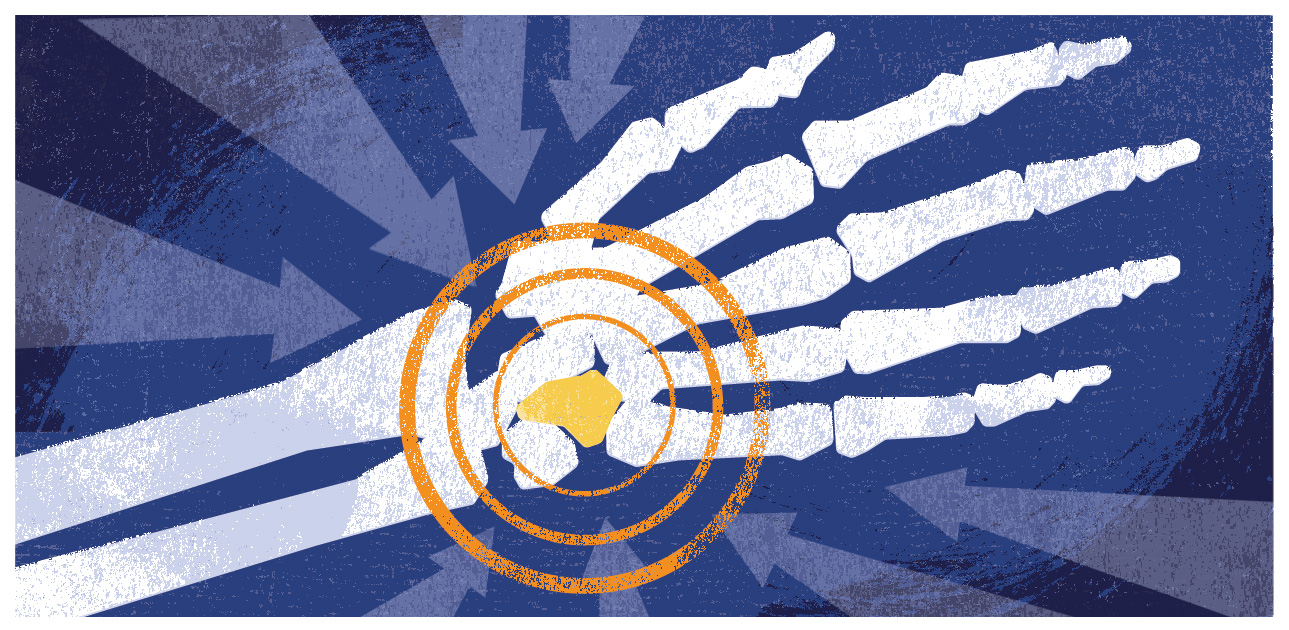The human hand is an intricate web of muscles, ligaments, nerves, and bone. Some injuries of the wrist and hand are more challenging to diagnose than others, even for experienced practitioners.
A hamate bone fracture is one of those conditions. It’s less common than some other wrist fractures, and symptoms can be vague. X-ray imaging can even miss a break in this bone, so CT or MRI imaging is recommended in patients with a suspected fracture if the plain x-rays are normal. Located in the second or distal carpal row near the ulnar nerve, the hamate bone connects the distal row of carpal bones to the fourth and fifth metacarpal bones. It’s also a key attachment point for muscles and ligaments. Fractures occur most often in young adult males who play sports. (Baseball fans may have heard of the hamate after watching a favorite player get hit on the hand by a fastball, but it can also occur when a golf club or tool is gripped too tightly, or an arm is extended during a fall.)
Without prompt diagnosis, treatment, and follow-up, hamate fractures can lead to acute and long-term complications and negative patient outcomes. Assistant Professor Nancy Gentry Russell, DNP, MSN, APRN, FNP-BC, and a colleague offer a case study suggesting thorough examination methods and a likely course of care in “Hamate Fracture: A Common Presentation of an Uncommon Fracture” (Advanced Emergency Nursing Journal, July-September 2024).

